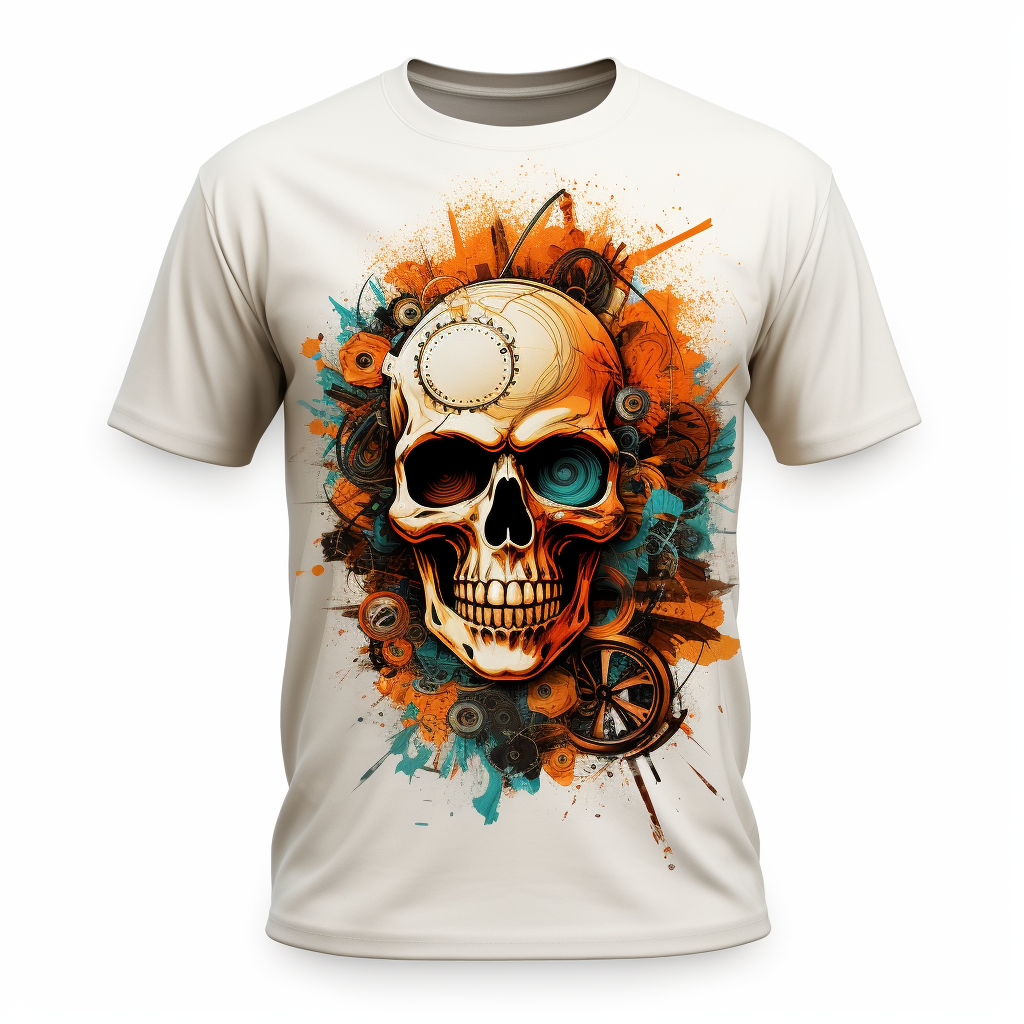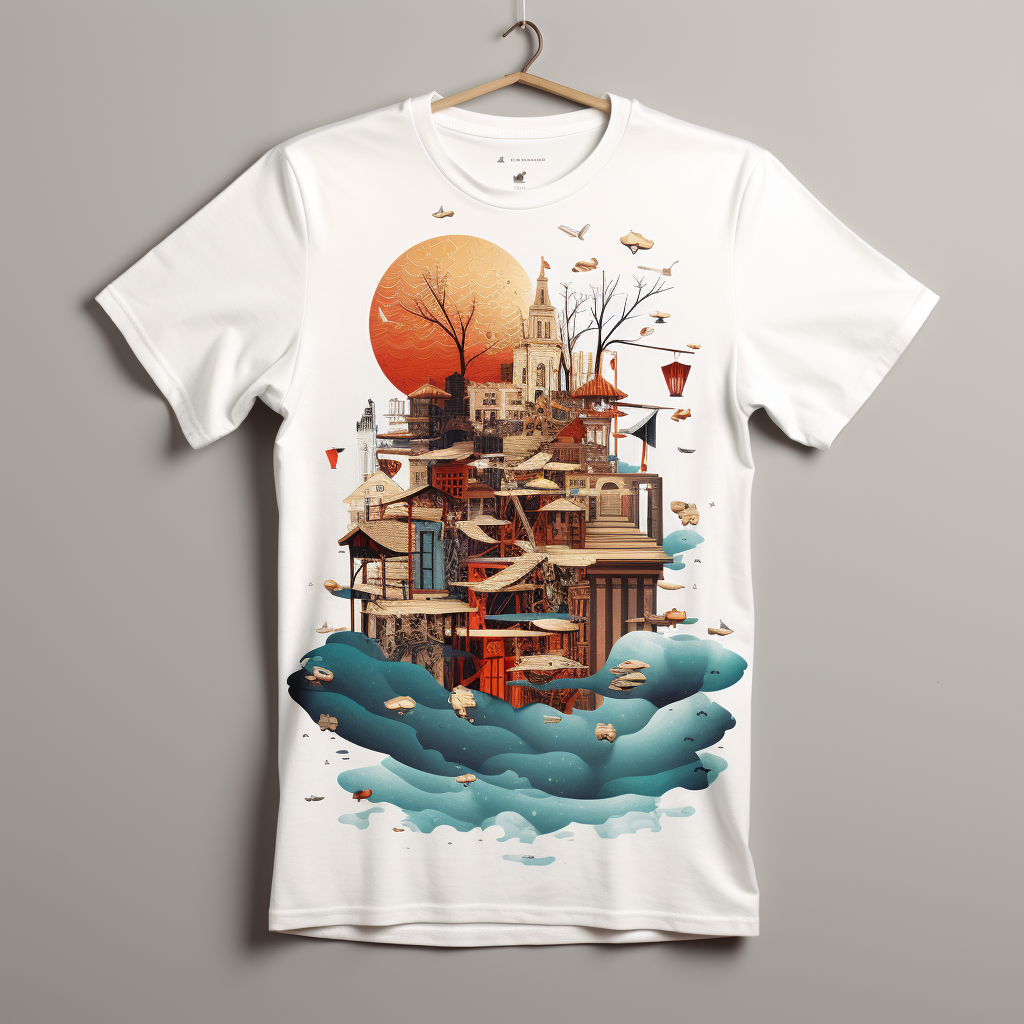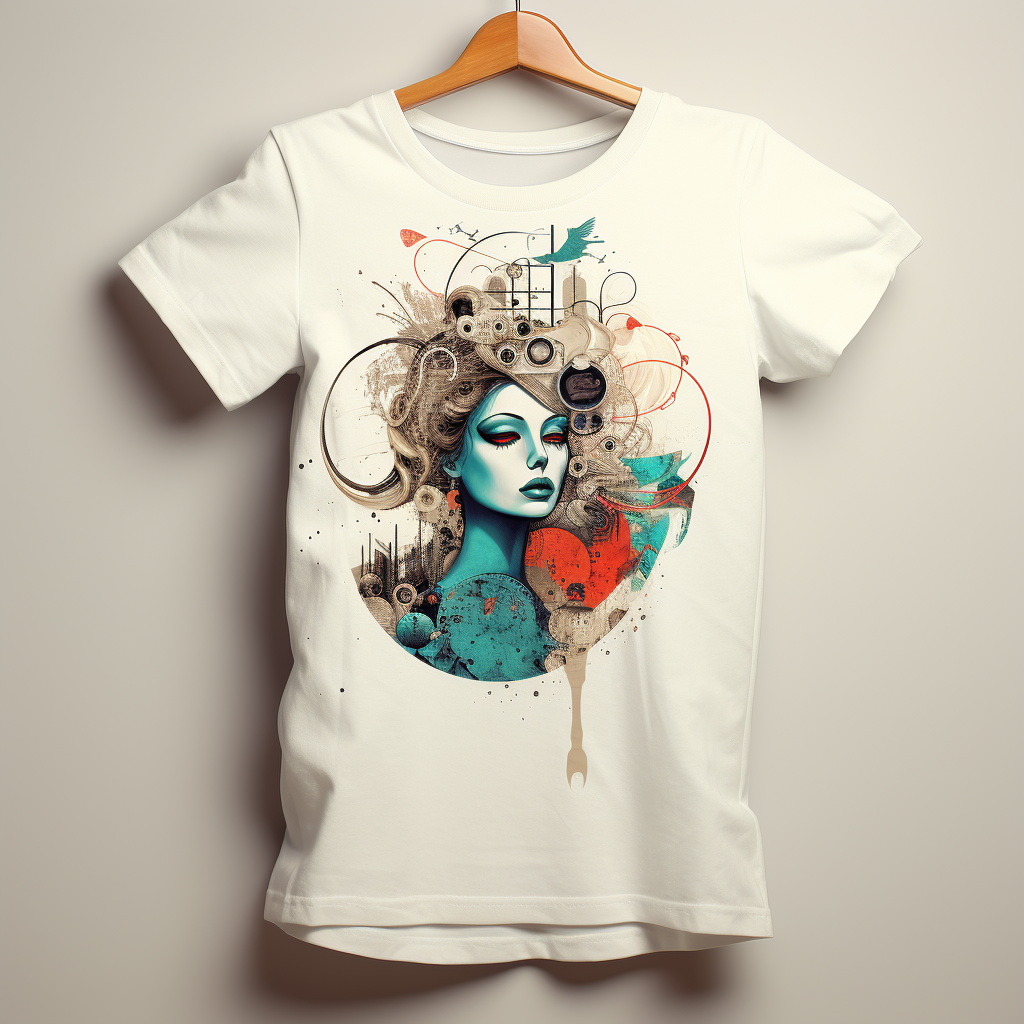Mastering T-shirt Business Online: From Concept to Profit


In the age of digital entrepreneurship, starting a T-shirt business online offers a compelling blend of creativity and commercial opportunity. With the global market for custom T-shirts expected to exceed $10 billion by 2025, according to a report from Credence Research, there has never been a better time to dive in. However, this industry is not just about flashy designs and catchy slogans; it requires meticulous planning, strategic branding, and a focused marketing approach to rise above the competition.
This comprehensive guide aims to give you the ins and outs of establishing a T-shirt business online, selling effectively, and growing your brand. Whether you're an artist looking to monetize your designs, or a savvy entrepreneur seeking a lucrative venture, this guide is your roadmap to success. We will cover everything from understanding the market landscape and legal requirements to mastering design and choosing the right selling platforms. Additionally, we'll explore proven marketing strategies and fulfillment options that can help you maximize profits while minimizing hassles.
The T-Shirt Business Landscape
The Rise of Custom Apparel
In the era of personalization, the demand for custom apparel, particularly T-shirts, is soaring. Whether it's a statement shirt or one with a quirky design, T-shirts serve as an expressive canvas for individuals. Companies like Teespring, Printful, and Redbubble have enabled artists and entrepreneurs alike to offer custom designs with minimal start-up costs. These platforms have democratized the creation and sale of custom apparel, opening up new avenues for small businesses.
The Market Potential
The numbers speak for themselves. As mentioned earlier, the global market for custom T-shirts is expected to exceed $10 billion by 2025. This impressive figure is backed by an increasing inclination toward customized products, and a growing consumer base that prioritizes uniqueness over mass-produced designs. In the U.S. alone, the custom T-shirt printing industry is estimated to be worth $3.7 billion in 2022, according to IBISWorld.
Challenges in the Industry
While the market is ripe for the picking, the T-shirt business is not without its challenges. High competition, especially from established brands and large platforms, can make it difficult for newcomers to gain traction. Plus, dealing with inventory, fulfillment, and quality control can prove to be a logistical hurdle.
So how do you navigate this complex landscape to carve out a niche for yourself? The answer lies in understanding your target market, offering high-quality products, and developing a robust marketing strategy that resonates with your audience.

Getting Started
Legal Requirements
Before diving into the creative and business aspects of your T-shirt venture, it's crucial to get the legalities straight. Here are some foundational steps to consider:
- Business Structure: Decide on the type of business structure that best fits your needs, such as a sole proprietorship, LLC, or corporation. Each has its own tax implications, paperwork, and legal responsibilities.
- Register Your Business: You'll need to register your business name and acquire the necessary licenses or permits. Depending on your jurisdiction, this could include a business license, a Federal EIN, and possibly a seller's permit.
- Bank Account and Accounting: Open a business bank account separate from your personal accounts. This makes it easier to manage finances and is generally required for tax purposes.
- Legal Policies: Draft clear policies for your online store including a Privacy Policy, Return Policy, and Terms & Conditions. Consulting a legal professional for this is often a good idea.
Business Plan
Just like any other venture, a well-structured business plan serves as the backbone of your T-shirt business. Here’s what it should cover:
- Market Research: Identify your target market, research competitors, and understand your niche.
- Business Objectives: Set short-term and long-term goals, such as revenue targets and growth plans.
- Budgeting: Outline your startup costs, monthly expenses, and pricing strategy.
- Marketing Plan: Include strategies for social media, SEO, and other channels to attract and retain customers.
Initial Funding
While starting a T-shirt business online can be cost-effective, especially with print-on-demand models, you’ll still need some initial funding. This can be for purchasing design software, advertising, and perhaps initial inventory if you plan to stock your own products.
- Bootstrap: Using your own money is the simplest, though riskiest, way to fund your venture.
- Investors: Family, friends, or venture capitalists can provide financial assistance in exchange for equity or future payback.
- Loans: Traditional business loans or small business grants are also options, but they come with their own set of requirements and payback terms.
By now, you should have a grasp of the legal and initial setup steps crucial for your T-shirt business. As you can see, it's not as simple as just putting up a website and expecting the sales to roll in; proper groundwork is essential for long-term success.
Designing Your T-Shirts
Tools & Software
You don't need to be a professional graphic designer to create compelling T-shirt designs, but having the right tools can make a world of difference. Here are some popular options:
- Adobe Illustrator: This is a go-to software for vector-based designs, offering the highest quality and scalability for your artwork.
- CorelDRAW: Another powerful vector-based tool, CorelDRAW offers a range of features similar to Illustrator but with a different user interface.
- Canva: For those who are new to design, Canva offers a user-friendly platform with plenty of ready-to-use templates. However, it may not offer the same level of customization as more advanced tools.
Design Tips
Creating a design that sells is both an art and a science. Here are some tips to get you started:
- Understand Your Audience: Know who you're designing for. Designs aimed at millennials may not resonate with an older demographic.
- Simplicity is Key: Sometimes less is more. A simple yet impactful design often fares better than a complicated, hard-to-decipher one.
- Color Theory: Understand basic color theory to ensure your designs are visually appealing. Use contrasting colors for text and background to make the design stand out.
- Typography: The right font can elevate your design. Ensure readability and consider custom fonts to add uniqueness.
- Test and Iterate: Use mockups to visualize how the design will look on a T-shirt. Make adjustments as needed and get feedback from potential customers or stakeholders.
Intellectual Property Rights
Before you go live with your designs, it's crucial to ensure you're not infringing on anyone else's intellectual property. This can include copyrighted images, trademarked phrases, or patented design elements.
- Check Existing Trademarks: Use databases like the U.S. Patent and Trademark Office’s (USPTO) to search for existing trademarks.
- Copyright Your Designs: While not mandatory, registering the copyright for your designs gives you stronger legal standing in case of infringement.
- Consult a Legal Advisor: When in doubt, consult an intellectual property attorney to ensure your designs are clear of any legal constraints.
- Designing your T-shirts is arguably the most enjoyable part of starting your business, but it's not to be taken lightly. Good design not only reflects your brand but also drives sales, making it a critical factor in your business's success.
Selling Platforms
After your designs are ready and legalities sorted, the next big hurdle is choosing the right platform to sell your T-shirts. Your choice could significantly affect your reach, profit margins, and control over branding.
Online Stores
Creating your own online store gives you complete control over the branding, customer experience, and most importantly, profit margins. Platforms like Shopify, WooCommerce, and Magento are popular choices, each offering various degrees of customization and ease of use.
Pros:
- Full control over branding and customer data.
- Lower transaction fees compared to marketplaces.
Cons:
- Higher upfront and maintenance costs.
- Requires efforts in driving traffic and SEO.
Marketplaces
Selling on established platforms like Etsy, Amazon, or eBay can give you instant exposure to a broad customer base. However, there are downsides to consider.
Pros:
- Immediate access to a large audience.
- Less concern about site maintenance and SEO.
Cons:
- High transaction and listing fees.
- Limited control over branding and customer experience.
Social Media
Platforms like Instagram and Facebook now allow businesses to sell directly through their apps, integrating shopping features into posts and stories.
Pros:
- Leveraging existing follower base for sales.
- Enhanced brand visibility through social sharing.
Cons:
- Dependent on the platform’s ever-changing algorithms.
- Limited data analytics compared to dedicated online stores.
Hybrid Approach
A growing number of businesses are opting for a hybrid approach, selling on multiple platforms to maximize reach and revenue. This does, however, increase the complexity of operations and requires a more nuanced marketing strategy.
So which platform should you choose? There's no one-size-fits-all answer. Consider factors like your target audience, budget, and expertise when making a decision. It's often advisable to start small, perhaps with a marketplace or social media, and then expand as you get the hang of it.

Marketing and Promotion
The perfect T-shirt design and the most user-friendly selling platform will fall flat without an effective marketing strategy. After all, even the best products need to be seen to be sold. Let's explore key marketing channels and tactics.
Branding
- Logo and Visual Identity: A consistent and appealing visual identity can make your brand memorable. This includes a well-designed logo, color scheme, and even the typography you use.
- Storytelling: What's your brand's story? Are you a quirky artist or an eco-conscious enterprise? Craft your story to connect emotionally with your target audience.
- Quality and Customer Service: Nothing beats word-of-mouth advertising. Ensure product quality and excellent customer service to get people talking about your brand.
SEO & PPC
- Keyword Research: Use tools like Google Keyword Planner to identify keywords relevant to your niche. Optimizing your product descriptions and blog posts around these keywords can enhance your visibility on search engines.
- Quality Content: Blogging about topics relevant to your audience can provide value, build trust, and improve SEO.
- Pay-Per-Click (PPC) Advertising: Google Ads and Bing Ads offer PPC options to appear at the top of search results, albeit at a cost. Make sure to optimize your ad copies and landing pages to get the best bang for your buck.
Social Media Advertising
- Facebook & Instagram Ads: Utilize these platforms' robust targeting options to get your products in front of the right people. A/B testing can help you refine your campaigns for maximum ROI.
- Influencer Collaborations: Partnering with social media influencers who align with your brand can offer immense exposure and lend credibility to your products.
- User-Generated Content: Encourage satisfied customers to share photos of themselves wearing your T-shirts. Showcase these on your social media and website for social proof.
Effective marketing is not a one-and-done deal. It's an ongoing process of refinement and adaptation. Measure the performance of your campaigns, tweak your strategies based on what you learn, and never stop engaging with your audience.
Order Fulfillment Options
Having a comprehensive understanding of how to get your T-shirts into the hands of customers is vital for business success. Let's explore the fulfillment options available to you.
Print-on-Demand
This is the most straightforward and low-risk method for beginners. Here, a third-party prints and ships T-shirts on your behalf whenever orders come in.
Pros:
- Low upfront costs.
- No need to manage inventory.
Cons:
- Lower profit margins.
- Less control over quality and shipping times.
- Popular Platforms: Printful, Teespring, and Merch by Amazon.
Self-Fulfillment
In this method, you print a bulk quantity of your T-shirts and handle shipping and inventory yourself.
Pros:
- Higher profit margins.
- Complete control over quality and customer experience.
Cons:
- Significant upfront investment.
- Risk of unsold inventory.
- Considerations: Warehouse space, shipping partners, and inventory management systems.
Third-Party Fulfillment Centers
Here, you produce T-shirts in bulk and store them in a third-party fulfillment center, which takes care of packing and shipping.
Pros:
- Lower shipping costs and faster delivery times compared to print-on-demand.
- More time to focus on design and marketing.
Cons:
- Additional costs for warehousing.
- Possible logistical challenges.
- Popular Options: ShipBob, Fulfillrite, and eFulfillment Service.
Hybrid Model
A combination of the above methods can be applied based on the product range, seasonal demand, or target audience. For instance, you can use print-on-demand for limited-edition releases while keeping popular designs in stock for quick shipping.
Key Considerations:
- Shipping Times: Customers expect fast delivery, so consider shipping times when choosing your method.
- Quality Control: The fulfillment method affects not just cost but also quality, which is vital for brand reputation.
- Scalability: Your initial choice might work for a small scale but consider how easily it can adapt as your business grows.
Performance Metrics and Analytics
Analyzing performance data is the cornerstone of any successful business. In this chapter, we'll explore key metrics that every T-shirt business owner should be familiar with.
Traffic Analysis
The more people visit your site, the higher your chances of making a sale. Use tools like Google Analytics to monitor:
- Unique Visitors: Indicates the reach of your website.
- Bounce Rate: High bounce rates could mean your website isn’t convincing enough for visitors to explore further.
- Average Session Duration: The longer visitors stay, the more engaged they likely are.
Sales Metrics
Your ultimate gauge of success is the number of T-shirts you sell. Key metrics include:
- Conversion Rate: The percentage of website visitors who make a purchase. The industry average is around 1-2%.
- Average Order Value (AOV): The average amount spent by customers per transaction. Upselling or bundling can increase AOV.
- Revenue: Total income from sales before expenses. It's crucial for understanding your business's overall health.
Customer Behavior
Understanding your customer’s journey can offer valuable insights. Metrics to consider:
- Customer Lifetime Value (CLV): An estimation of how much a customer is worth over the entirety of their relationship with your business.
- Cart Abandonment Rate: The percentage of shoppers who add items to their cart but do not complete the purchase. A high rate may indicate friction in the checkout process.
- Product Page Views: Knowing which products attract the most attention can guide inventory and marketing decisions.
Customer Feedback
- Reviews and Ratings: These offer firsthand insights into customer satisfaction and areas for improvement.
- Net Promoter Score (NPS): A quick survey asking customers how likely they are to recommend your business can provide a snapshot of customer satisfaction.
Social Media and Email Metrics
- Engagement Rate: The ratio of interactions (likes, shares, comments) to total followers.
- Email Open Rates and CTR: These can offer insights into the effectiveness of your email marketing campaigns.
Effective data analysis is not about gathering as much data as possible, but about focusing on the right metrics that align with your business goals. By continually monitoring and adapting, you can optimize for better performance and growth.

Conclusion and Actionable Steps
Congratulations on making it this far! Starting a T-shirt business may not be a walk in the park, but armed with the right knowledge, the journey becomes a lot more navigable.
Key Takeaways:
- Market Research: Never underestimate the power of knowing your audience and the existing competition.
- Business Plan and Legalities: A solid plan is your roadmap, while abiding by legal requirements keeps your business credible and avoids future headaches.
- Designing: Be creative, but also strategic. Balance artistry with commercial appeal and legal safety.
- Selling Platforms: Consider the pros and cons of each channel, and maybe even utilize a hybrid approach for maximum reach and revenue.
- Marketing: Visibility is everything. Use a multi-channel approach to marketing, and remember: the best marketing is a satisfied customer.
- Order Fulfillment: Match your method to your business scale, complexity, and customer expectations.
- Metrics and Analytics: What gets measured gets managed. Pay attention to performance indicators to keep optimizing.
Actionable Steps:
- Start Small: Don’t try to do everything at once. Pick one or two designs, and a single selling platform to begin with.
- Set Budgets: Financial planning cannot be overstated. Keep track of all expenses, down to the last cent.
- Quality Over Quantity: One excellent design is better than ten mediocre ones. Take time to test, get feedback, and iterate.
- Engage and Build Community: Utilize social media to build a loyal customer base. Encourage sharing and feature customer testimonials and photos.
- Review and Adapt: Regularly assess your business performance. Be willing to pivot or refine your strategies based on what the data is telling you.
Starting a T-shirt business is a rewarding endeavor, especially when you see people wearing your designs. Every successful business is built on a blend of passion, preparation, and the willingness to learn. There’s no better time than now to set the wheels in motion. Good luck!
FAQs: Mastering the T-shirt Business Online
What is the first step in starting a T-shirt business?
The first crucial step is market research. Understanding your target audience and the existing competition helps you create designs that stand out and sell.
Do I need a business license to sell T-shirts online?
Yes, even online businesses generally require a license to operate. The specifics may vary by jurisdiction, so consult local laws and consider seeking legal advice.
What are the best platforms to sell T-shirts online?
Platforms like Shopify for a personalized store, Etsy for a marketplace experience, and Instagram for social media selling are popular choices. Each has its pros and cons.
How can I promote my T-shirt business?
Multi-channel marketing including SEO, PPC ads, social media campaigns, and influencer collaborations can be effective in promoting your T-shirt business.
Is it better to print T-shirts myself or use a print-on-demand service?
Both methods have their pros and cons. Print-on-demand has lower upfront costs, while printing yourself offers higher profit margins and more control over quality.
How can I price my T-shirts for profit?
Consider factors like production costs, competitive pricing, perceived value, and your brand positioning to come up with a pricing strategy.





-500x500.jpg)
-500x500.jpg)
-500x500.jpg)
-500x500.jpg)
-500x500.jpg)